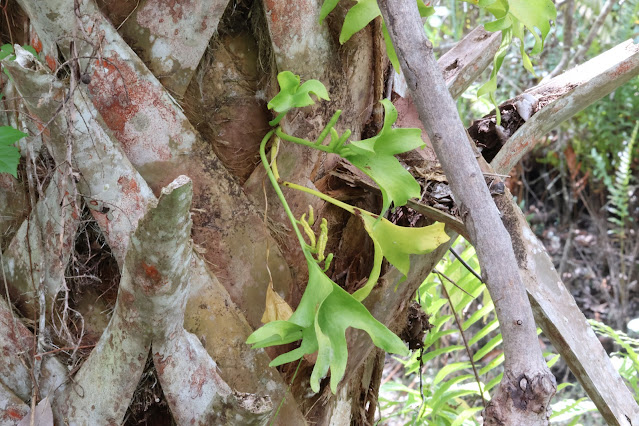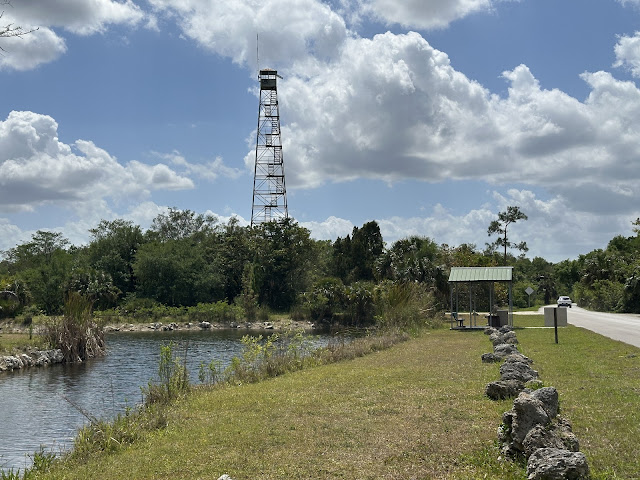Yesterday I took a tour of the largest state park in Florida, one that is home to a variety of plant and animal species that can be found nowhere else in the continental U.S.
The Friends of Fakahatchee is a volunteer group that operates tram tours in the park. Gordon led the tour. He first came to Florida from Minnesota 30 years ago. His wife and he have been full-time residents since the third year. Gordon leads tours in Fakahatchee, Shark Valley and several other Everglades parks.
On yesterday's tour, we talked a lot about alligators and crocodiles (both of which are found in the park), but the only gator that was seen was this little one. (I see much bigger gators in my own community just about every day!)
Gordon is especially interested in ferns. He pointed out many different kinds of ferns. This one is called a "hand fern."
Lichens play a big part in the ecology of Florida wilderness areas like Fakahatchee.
Just a few inches in elevation make big differences in whether an area is a grassland or a hummock for cypress trees.
Palms are Florida's state tree, though technically they are not trees.
Gordon talked about the devastation invasive Burmese pythons cause for small and medium-sized Everglades mammals like raccoons, rats, rabbits, etc. This is the skin of a relatively small Burmese python.
It was an informative and enjoyable tour, though we saw very few birds and animals. We are near the end of the long dry season -- which has been even drier than usual -- so many birds and mammals that rely on fish, mollusks and other food in the water have moved to locations with better water resources.










2 comments:
On our last tour of Everglades park we saw many gators, some really large ones, and even one crocodile who was well out of its range. Yes, the Burmese pythons have had a huge impact of the ecology, so I hope their numbers can be controlled.
A nice tour.
Post a Comment